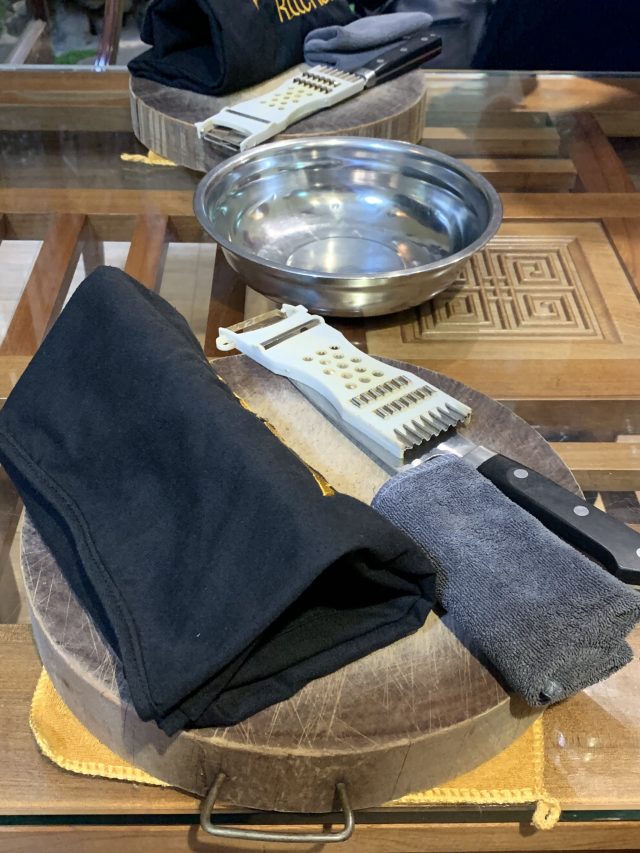Lamb is one those ingredients that is quite common around the world and can be used in a variety of dishes. Rack of lamb makes for an elegant presentation and is very tasty if cooked properly. One of the keys to cooking a successful lamb is to make sure that you don’t undercook or overcook the meat. Having an instant-read thermometer handy is a key to making sure that you cook the lamb to a medium temperature with a pink interior. Lamb can also be a little gamey, so using a flavorful rub is a way to make the flavor a little more mild. We really enjoyed this as a wonderful weekend dinner.
INGREDIENTS
- Rack of Lamb – frenched
- 3/4 tbsp Kosher Salt
- 1 tbsp Dried Rosemary
- 2 cloves Roasted Garlic (or 1 clove Garlic)
- 1/8 cup Dijon Mustard
- 1/8 cup Stone Ground Mustard
- 1/2 tbsp Balsamic Vinegar
- 2 tbsp Olive Oil

INSTRUCTIONS
In a small food processor, combine the salt, rosemary, garlic, Dijon mustard, ground mustard, balsamic vinegar and pulse to form a thick paste. Preheat an oven to 450 degrees. Rub the fat-side of the lamb with the mustard and herb paste, spreading it evenly across the lamb. Let the lamb sit at room temperature with the rub for about 30 minutes. Place the lamb in a cast-iron skillet or roasting pat with the olive oil, bone-side down, and cook until the internal temperature reaches about 135 to 140 degrees. Remove from the oven and let rest for 10 to 15 minutes. Cut into either double chops (2 bones per chop) or single chops and serve.


































